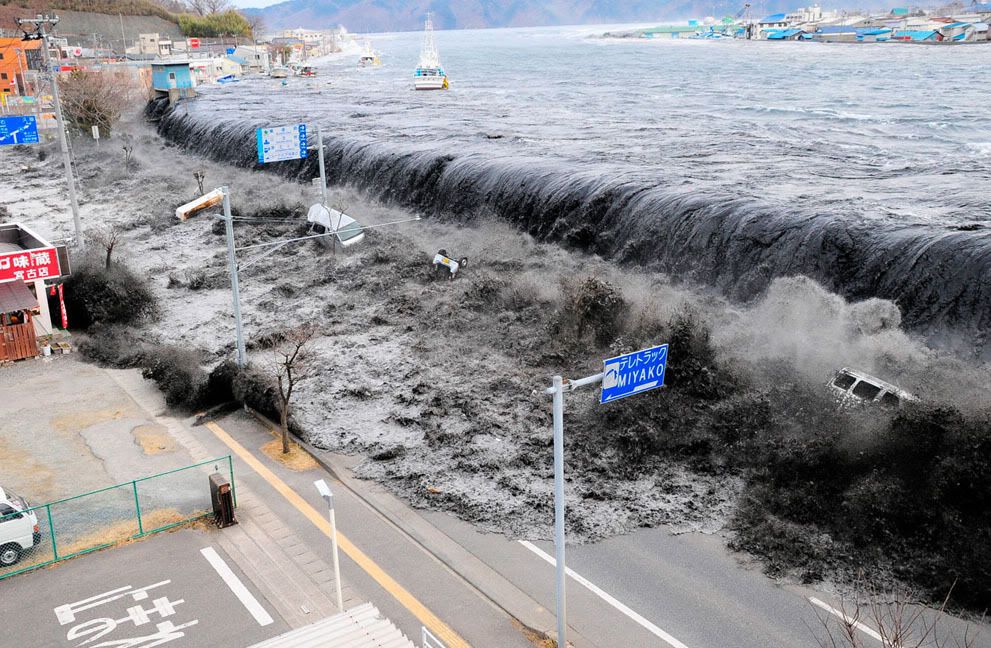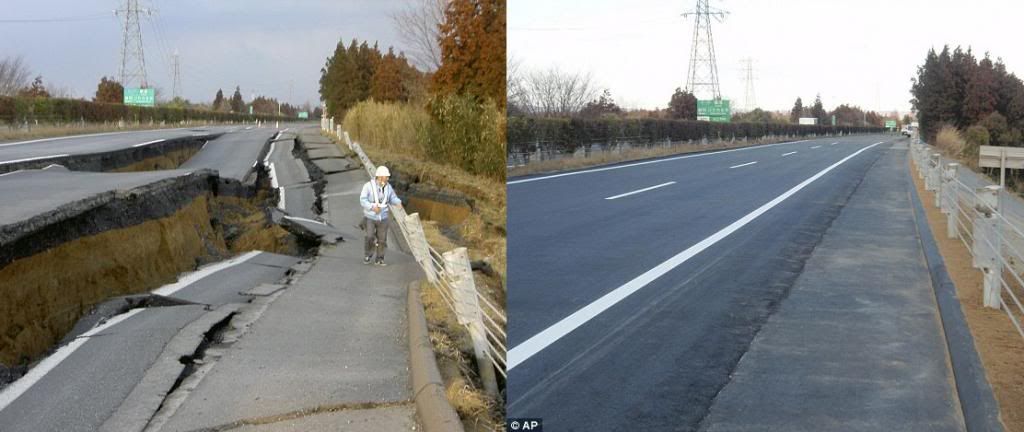Two years ago, the eastern coast of Japan was struck with a terrible tragedy. On March 11, 2011 a 9.0 earthquake at 2:46PM (JST). While the earthquake off the coast did do damage, it was but a prelude to the true path of destruction that was rushing toward shore. This devastating blow came in the form of an incredibly powerful and devastating tsunami. The footage of the destructive water was shocking and almost hard to believe. Once the waters receded, that path of destruction was shockingly severe. The nuclear power plant in Fukushima was badly damaged and left crippled. $235 billion of physical damage was done. But the real toll were the many lives that were lost. The final toll was 15,881 dead, 6,142 injuries, and 2,668 still missing.
Reuters/Mainichi Shimbun
Though the death toll was great, there were also encouraging signs that caused my respect for the Japanese people to swell. Here in the United States, the raindrops had barely stopped falling from hurricane Katrina, and looting quickly became widespread. In stark contrast I didn't hear of any looting after the Japanese tsunami. Perhaps it's due to their disciplined culture. Maybe the magnitude of the disaster made it clear that they needed to come together. But one thing is pretty clear to me... That is not how it would have happened here. In the US, I feel that the usual cycle of looting would have been the norm, rather than a rarity as it was in Japan.
Then there were the lines for food. Immediately following, markets were rationing food to the effected citizens. The set up was an open table/cart and everyone was told what they were allowed to take. In such a panic situation, you would think that these food limits would be ignored, and that people would just storm the table, grab what they could, and fight over the scraps. But that's not what happened. People actually queued to wait their turn in line, and then took only what was permitted in a very orderly pattern.
The situation at Fukushima still isn't solved, but there were workers who were willing to risk it all to try and solve the situation. Two hundred pensioners actually volunteered to go into the radioactive conditions and do any work that was needed to try and bring the situation under control. Their argument was that if anyone is going to go in and expose themselves to that radiation and the risks involved, it should be them. They were over sixty years of age, and have less life to live, thus less time for the effects of the radiation to manifest. Willing to lay down their lives, or at least cut them short so that the younger generation need not face that danger. Talk about amazingly selfless! I fear that if that happened here, the priority would be on who to blame, and many going in would be more concerned with lawsuits than a selfless desire to help.
Okay, so these people lost a lot. So what do you think the reaction would be when someone who lost everything finds a safe full of money washed up in the debris? Most people would probably keep it. But what did the Japanese do? They gave it back! In total, the peoples finding money returned $78 million in lost cash. Most was in wallets and purses, but safes were found as well. One safe containing $1 million was found! Those finding the money reasoned that if a safe was washed up, that means a house was destroyed. These people lost everything and could certainly use this money they also likely considered lost. So even though those finding the money were also in need, they held the return to it's rightful owner (in need), over benefiting from another's tragedy, even though they themselves were in need as well. Amazing!
Then there is the recovery. Above is a picture of a road that was badly damaged by the earthquake. How long do you think this repair took? Weeks? Months? Try six days on for size! Yes, this amazing repair only took six days. I don't know about the road crews where you live. But my local crews take weeks just to get out and fix a pothole. I don't even want to try and estimate how long this repair would take!
Then there's the following pictures that show the state of some of the badly effected areas from hurricane Katrina here in the US. These photo were taken five years after the storm hit.
Julie Dermansky
Now let me tell you that the cost of hurricane Katrina was $81 billion. As we stated earlier, the 3-11 Japanese earthquake/tsunami caused $235 billion of damage. So after two years, how do you think the sites look today? Well, scroll down and look at the before and after images to see for yourself...
Getty Images
The transitions are astonishing! The masses of debris have been removed. Almost all of the heavily damaged structures have been demolished. Less damaged structures have or are being repaired. Some areas have not been rebuilt and instead are now considered to be flood plains and too risky to build up to their former state again. A lot of credit has to go out to them for cleaning up as well as they did, and as quickly as they have. The forsight to forfeit some plots of land is also a smart one. Yet it makes me sad to see that Katrina was much less devastating (in comparison), and more time was available to clean up, yet the state of those hard hit places in New Orleans simply looks like they left it as-is and didn't even bother to try and clean up. In one way that makes me sad of the response, but may also be a good thing if it means that this land that is bellow sea level will remain uninhabited for saftey's sake.
But one thing is clear... Either in comparison or in it's own, the Japanese recovery is an amazing and inspirational one. Then consider how the Japanese people reacted in the face of this disaster, and I can't help but tip my hat to them in heartfelt respect an admiration.








No comments:
Post a Comment